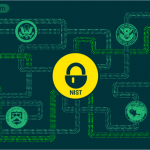
The introduction of the General Data Protection Regulation (GDPR) in May 2018 set a high bar in privacy protection for individuals within European Union (EU) member states. The data privacy landscape in the US has changed considerably in recent years and data protection rules are now aligned increasingly with a European approach, although there remain some big differences. This article looks at the differences between modern data privacy laws in the EU and the US.
GDPR: Brief Overview
GDPR is a comprehensive data privacy law that applies to organizations that collect, store, or hold personal data belonging to EU residents in EU member states. The European Commission defines personal data as any information involved in the processing of data that relates to an identified or identifiable natural person (data subject). Organizations operating within EU countries, that sell goods or services to EU citizens, or that monitor the behavior of data subjects all must comply with GDPR.
The GDPR requirements for compliance are substantial and are based on seven key principles, including minimization in data collection, storage limitation, and accountability. Specific categories of sensitive data require extra protection, often necessitating a data protection impact assessment.
Non-compliance with GDPR splits penalties into two tiers based on the severity of the violations. Standard violations lead to penalties of up to €10 million or 2% of annual global turnover, while the penalties for more severe violations can be up to €20 million or 4% of annual turnover.
GDPR replaced the Data Protection Directive as that law was deemed insufficient in scope and strength for modern data privacy protection in Europe. Since the GDPR’s implementation, several important rulings by the European Court of Justice have further bolstered individual rights, including allowing consumer protection associations to take representative actions on behalf of consumers affected by GDPR infringements. Data Protection Authorities in each member state typically handle complaints regarding violations of data subject rights under GDPR.
US Data Privacy Laws and Differences with EU
Arguably the most significant difference in US legislation versus the EU is the lack of a comprehensive data privacy law that applies to all types of data and all US companies. Instead, American law takes a more fragmented approach with various regulations governing different sectors and types of data, including:
- The Health Insurance Portability and Accountability Act (HIPAA) – This federal law protects sensitive patient healthcare information by specifying how healthcare providers must secure such data against fraud and theft. The law also sets limits on how organizations can use or disclose protected health information.
- The Gramm-Leach-Bliley Act (GLBA) – This act applies to financial institutions, and sets out responsibilities and standards to protect the confidentiality and security of consumers’ nonpublic personal information. The Federal Trade Commission (FTC) announced important changes to the GLBA’s Safeguards Rule in 2022 detailing more prescriptive data security measures that financial institutions need to take to protect customer data.
- The Federal Information Security Management Act (FISMA) – This federal law requires federal agencies to develop, document, and implement an agency-wide program that provides information security. FISMA 2022 is a bipartisan update to FISMA that takes a cutting-edge and strategic approach to ensure federal IT systems can better prepare for and respond to today’s cyber challenges that threaten federal information and information systems from unauthorized access, use, and disclosure.
Changing US Laws
A notable trend for US businesses is the recent or impending changes to several existing US data protection laws that reflect an increasingly interconnected world with larger volumes of data than ever moving around a more complex information ecosystem. The necessity of these changes exemplifies a different approach between laws in the EU and the US.
GDPR arguably sets the standard for data privacy worldwide. However, the lack of a true privacy-first approach in America’s disparate data privacy regulations makes it necessary to update them in line with the fundamental rights people now expect around how their data is used, shared, or disclosed.
California Consumer Privacy Act and More
In recent years, state laws have emerged that attempt to provide stronger protection of personal data to individuals in those jurisdictions and greater transparency around how data is being shared. The US law that’s most comparable to GDPR is the California Consumer Privacy Act (CCPA), which applies to consumers who are California residents.
CCPA became effective in January 2020, but the California Privacy Rights Act (CPRA) amends the privacy legislation to expand opt-out rights and introduce other changes that bring it in even closer alignment with GDPR. CPRA became effective in January 2023. Interestingly, since the passage of the CCPA, 11 other US states have signed a comprehensive data privacy law.
Cultural Differences
There are important cultural differences that can’t be ignored when assessing the differing data privacy laws between the EU and the US. Exemplifying the different approaches is how The EU Charter of Fundamental Rights establishes data protection as a fundamental right. This privacy-first mindset probably stems from a history of individuals’ information being used for nefarious purposes stretching back to the days of National Socialism and Communism.
In contrast, the US has traditionally taken a more hands-off approach that favors the companies that collect and use personal data. The use of personal data for commercial purposes exceeds the importance of data privacy. Recent years have seen the mindset somewhat shifting towards better protecting individuals as data breaches continue to cause havoc, but the underlying cultural differences will take more time to dissolve and bring the US in fuller alignment with the EU’s mindset and laws.
Replacing the Privacy Shield Framework
An important regulatory change was announced in March 2022 with the Trans-Atlantic Data Privacy Framework set to replace the EU-US Privacy Shield framework. Both of these regulatory frameworks relate to data transfers of EU personal data to the United States.
The European Court of Justice invalidated the Privacy Shield in 2020 after an Austrian activist successfully claimed that the framework did not protect Europeans from US surveillance. This ruling led to uncertainty for many companies, including the likes of Google and Facebook, about cross-border data transfers.
The Trans-Atlantic Data Privacy Framework introduces safeguards that limit access to data by US intelligence authorities to what is necessary and proportionate to protect national security. The result is likely to be freer cross-border data flows and less regulatory uncertainty for businesses operating in both regions.
Navigating A Complex Data Economy
Businesses today must navigate a complex data economy in which an increasing number of regulations require them to be very careful about the collection, storage, and processing of personal data. There are notable gaps in the scope and strength of US data privacy laws compared to Europe, but the tide continues to turn as existing US laws are amended and new ones come into effect.
Regardless of which law(s) your business needs to follow, regulatory compliance with today’s data privacy laws is essential for maintaining customer trust and avoiding substantial legal and financial consequences.
Frequently Asked Questions
The 7 principles of data protection upon which GDPR is based are:
1. Lawfulness, fairness, and transparency
2. Purpose limitation
3. Data minimization
4. Accuracy
5. Storage limitation
6. Integrity and confidentiality
7. Accountability
Download our free ebook on
GDPR compliance
A comprehensive guide for all businesses on how to ensure GDPR compliance and how Endpoint Protector DLP can help in the process.















